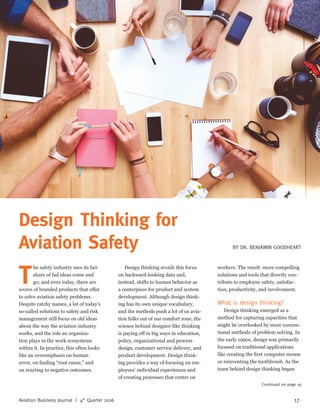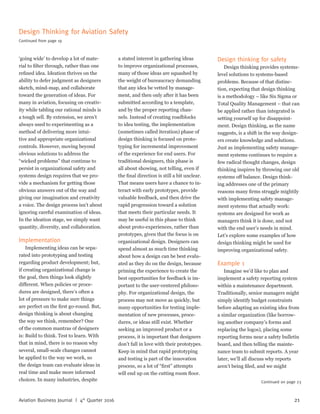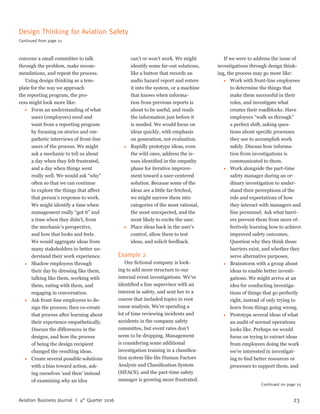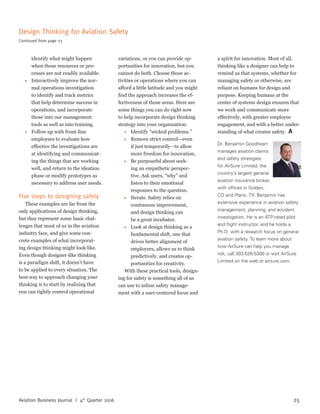The document discusses the application of design thinking to enhance aviation safety by shifting the focus from traditional risk management approaches to a more human-centered perspective. It emphasizes empathizing with employees, encouraging creativity, and collaboratively developing solutions to 'wicked problems' faced in aviation environments. The process involves three steps: inspiration, ideation, and implementation, promoting continuous improvement and innovation in safety management.




